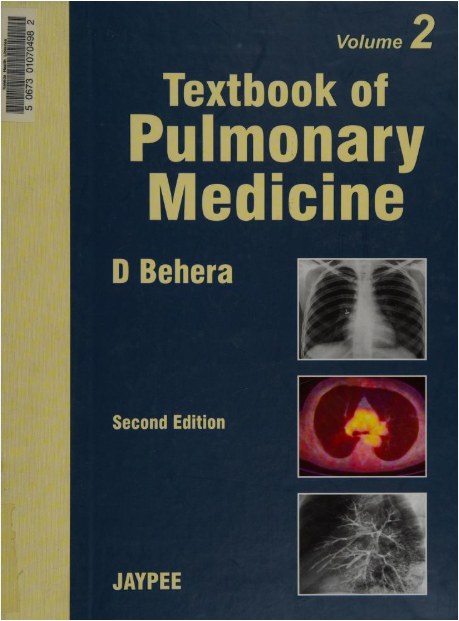Pulmonology Medical Textbooks: Key Texts for the Modern Physician
Pulmonology, the medical specialty focused on the diagnosis, treatment, and prevention of diseases related to the lungs and respiratory system, is essential for modern healthcare. A solid understanding of pulmonology is crucial for physicians, as respiratory conditions affect millions of people worldwide. In this article, we explore key pulmonology medical textbooks that every modern physician should consider in their practice.
Understanding Pulmonology and Its Importance
Pulmonology covers a broad range of diseases, including asthma, chronic obstructive pulmonary disease (COPD), pneumonia, pulmonary fibrosis, and lung cancer. These conditions can be life-threatening if not diagnosed and treated promptly. Therefore, pulmonologists need to have access to comprehensive and up-to-date resources that provide in-depth knowledge about these diseases, their pathophysiology, diagnosis, and treatment.

The Role of Pulmonology Textbooks in Medical Education
Medical textbooks play an essential role in educating healthcare professionals, especially those specializing in pulmonology. They provide an evidence-based foundation for understanding complex respiratory conditions. Pulmonology textbooks offer valuable insights, not only for medical students but also for practicing clinicians looking to stay updated on the latest research and treatment options.
Key Features of Pulmonology Medical Textbooks
Pulmonology textbooks serve as a vital resource for both medical students and professionals. A good pulmonology textbook will have the following key features:
- Clear and Concise Language: Textbooks should present information in a straightforward manner, making complex topics easy to understand.
- Evidence-Based Information: The inclusion of recent research and clinical guidelines is essential for staying informed about the latest advances in pulmonology.
- Comprehensive Coverage: A well-rounded textbook will address both common and rare respiratory diseases and their treatments.
- Illustrations and Diagrams: Visual aids like diagrams, flowcharts, and imaging studies help clarify complex concepts and improve comprehension.
Recommended Pulmonology Medical Textbooks
1. Murray & Nadel’s Textbook of Respiratory Medicine
Overview
One of the most authoritative references in the field, Murray & Nadel’s Textbook of Respiratory Medicine offers comprehensive coverage of respiratory diseases. Written by world-renowned experts, this textbook covers topics ranging from basic lung physiology to advanced diagnostic and therapeutic techniques.
Key Features
- Detailed chapters on pulmonary diseases such as asthma, COPD, lung cancer, and pulmonary vascular diseases.
- In-depth coverage of diagnostic tools, including pulmonary function testing, imaging, and biopsy techniques.
- Contributions from international experts, ensuring a global perspective on respiratory medicine.
- Updates on cutting-edge therapies, including targeted treatments and gene therapies.
2. Fishman’s Pulmonary Diseases and Disorders
Overview
Fishman’s Pulmonary Diseases and Disorders is another staple in the field of pulmonology. This textbook is well-regarded for its depth and clarity. It provides an extensive overview of pulmonary disorders, from the most common conditions to rare diseases.
Key Features
- Thorough exploration of pathophysiology, epidemiology, and clinical management of various pulmonary diseases.
- Sections on evidence-based guidelines for treating respiratory diseases, making it a valuable resource for clinical practice.
- Insightful chapters on emerging trends in pulmonology, including environmental lung diseases and lung transplantation.
- Numerous clinical case studies, helping readers apply theoretical knowledge to real-world situations.
3. Clinical Respiratory Medicine
Overview
Clinical Respiratory Medicine focuses on the clinical aspects of pulmonology, making it an ideal textbook for physicians in training or those looking for a practical guide to diagnosing and treating respiratory diseases.
Key Features
- Practical guidance on diagnosing and managing common and complex pulmonary disorders.
- Focus on patient-centered care, including communication strategies and interdisciplinary management.
- Detailed explanations of diagnostic tools, such as bronchoscopy and pulmonary function tests.
- Coverage of critical care aspects of pulmonology, including mechanical ventilation and intensive care unit management.
View more on Google
4. Pulmonary Medicine: A Comprehensive Guide to Pulmonary and Critical Care Medicine
Overview
For those specializing in critical care pulmonology, Pulmonary Medicine: A Comprehensive Guide to Pulmonary and Critical Care Medicine is an invaluable resource. This textbook provides detailed information on both chronic and acute respiratory conditions.
Key Features
- Emphasis on critical care management, including advanced life support and treatment of acute respiratory distress syndrome (ARDS).
- Insights into respiratory complications in intensive care settings, such as ventilator-associated pneumonia and pulmonary embolism.
- Practical advice on managing complex conditions like pulmonary fibrosis and interstitial lung diseases.
- Multidisciplinary approach, highlighting collaboration with intensivists, nurses, and respiratory therapists.

Importance of Keeping Up with New Editions and Resources
Medical knowledge in pulmonology, as in all fields of medicine, is constantly evolving. The development of new treatments, therapies, and technologies means that textbooks must be updated regularly to remain relevant. The latest editions of pulmonology textbooks include newly published research findings, clinical trials, and advancements in treatment approaches.
Moreover, online resources like UpToDate, PubMed, and clinical guidelines from organizations such as the American Thoracic Society (ATS) offer up-to-date information on specific pulmonary conditions, ensuring that healthcare professionals have access to the most current data.
Conclusion
Pulmonology is a rapidly advancing field that requires healthcare professionals to stay updated on the latest research, diagnostic techniques, and treatment options. Key textbooks such as Murray & Nadel’s Textbook of Respiratory Medicine, Fishman’s Pulmonary Diseases and Disorders, Clinical Respiratory Medicine, and Pulmonary Medicine: A Comprehensive Guide are indispensable resources for both students and practicing clinicians. By investing time in studying these comprehensive, evidence-based textbooks, physicians can enhance their knowledge and improve patient outcomes in the field of respiratory medicine.
In addition to textbooks, staying informed through continuous education and online resources is crucial for mastering this vital branch of medicine.
Learn more about dental books

